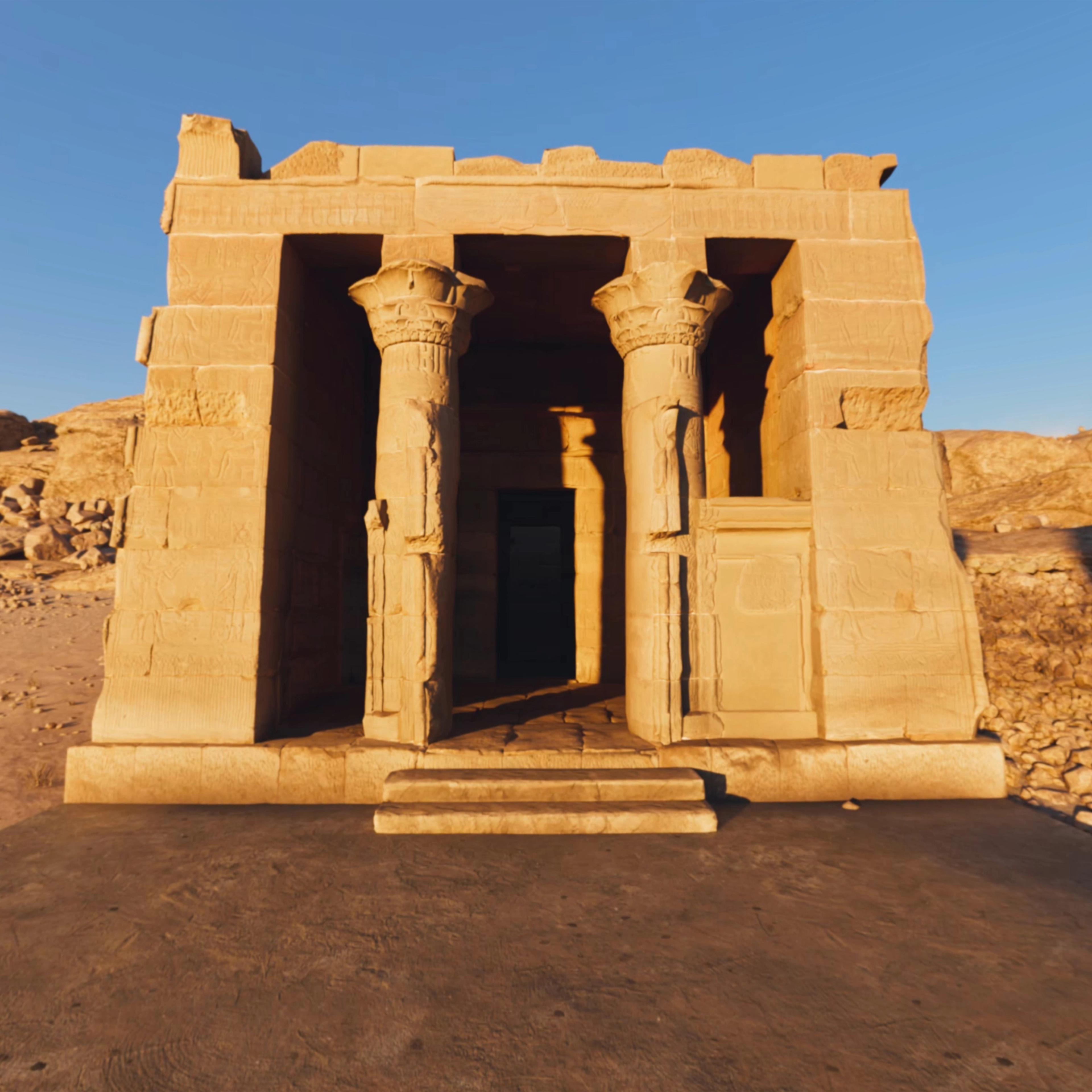The Met and our collection have appeared in virtual worlds many times, as far back as our consultation on the 1997 video game Nile: An Ancient Egyptian Quest, bringing our collections to new spaces and new audiences. Metcraft built a virtual version of the Temple of Dendur in Minecraft. In Replica, we invited Roblox players to a recreated Great Hall and immersive versions of some of our most iconic works. As an institution, our mission is to connect people to art, ideas, and one another—and as technology has evolved, we have an ever-growing toolkit for building those connections through immersive, interconnected, at-home virtual spaces. But not until this year had we built one ourselves.
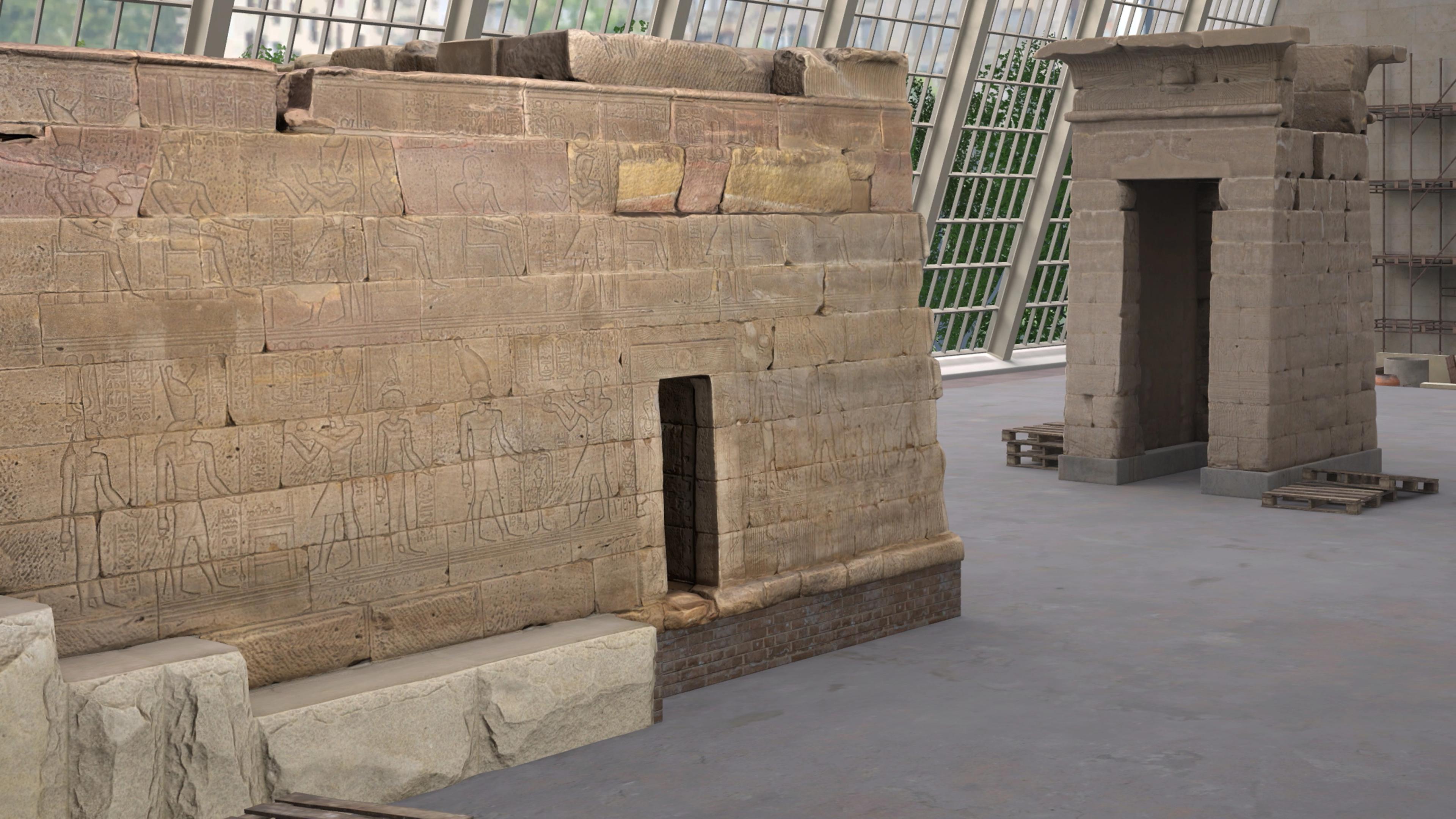
Virtual gallery view of the Temple of Dendur as seen in Atopia.
The experiences
We created two distinct virtual experiences with the metaverse platform Atopia, a new place for audiences to interact with cultural spaces digitally. The first is a deep dive into the Museum’s beloved Temple of Dendur, while the second covers monumental works from the Arts of Oceania. In a virtual reality (VR) headset or from the comfort of your web browser, you can “walk” through a recreation of Dendur’s wing at The Met or visit the temple in its original home in Nubia and watch as it is nearly submerged by the Nile River. You can explore a lush space full of Oceanic objects, and even “pick up” a Nguzu Nguzu—after seeing it in context as a part of a massive canoe.

Virtual gallery view of canoe with a Nguzu Nguzu figurehead as seen in Atopia.
These experiences were developed in deep collaboration with a host of Met staff, and we are especially grateful for the work of our curatorial colleagues Maia Nuku, Evelyn A. J. Hall and John A. Friede Curator for Arts of Oceania; Sylvia Cockburn, Senior Research Associate, Arts of Oceania; Isabel Stünkel, Curator, Egyptian Art; and our outside consultant (and voice of the Dendur experience) Erin Peters, Assistant Professor, Appalachian State University. Visit The Met’s VR hub for a full list of credits and contributors.
Each experience and interaction enables you to do things you cannot in the physical museum: you can walk inside Dendur; you can travel through time; you can look inside and underneath objects; you can pull a seventeen-foot bisj pole down to eye level. This is one of the primary motivators behind our emerging technology projects: to open access to our collection in a way that wouldn’t otherwise be possible.
Dendur Decoded
In a virtually recreated gallery, visitors can explore the Temple of Dendur, digging into details ranging from understanding aspects of its decoration to the design and architecture of the wing. A 3D, 360° film tells the story of the Campaign to Save the Monuments of Nubia, without which Dendur would have been permanently underwater.
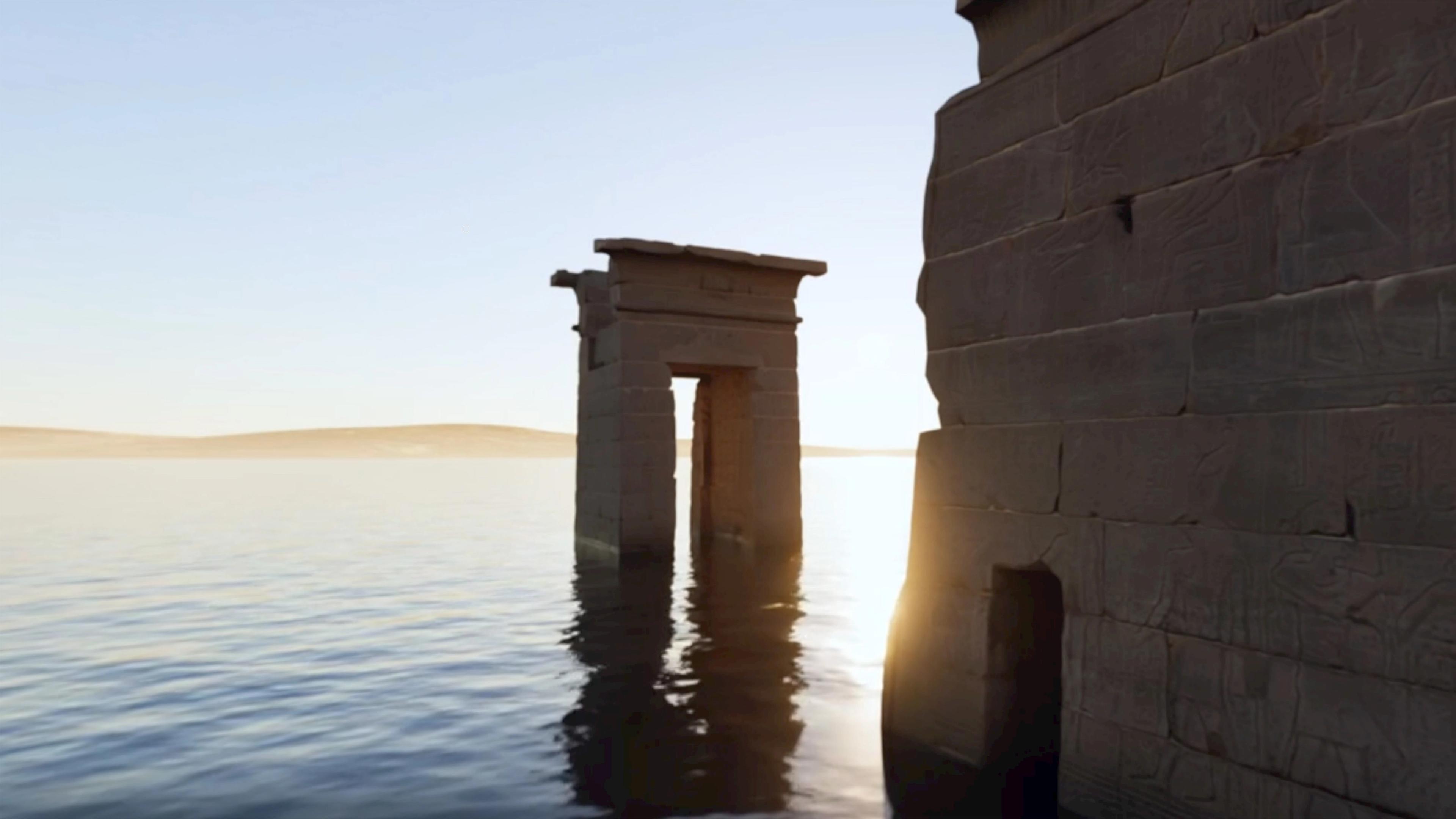
Virtual view of the Temple of Dendur partially submerged in the Nile, as seen in Atopia.
A game allows you to rebuild the temple at The Met—and to uncover how we did it in the 1970s. You can also step inside the temple with a flashlight, noting the raised reliefs originally meant to be illuminated by oil lamps. The virtual space is not an exclusively solitary experience: visitors can at any time create a shared, private multiplayer session. In an open-ended, meditative space, you can reflect and record a voice message for others to listen to.
Oceania: A New Horizon of Space and Time
Fifteen works from the Arts of Oceania can be explored in a virtual space lush with greenery and ambient sound, much of which is from The Met’s archives. A simple tap on any object reveals contextual content from storytelling by Pacific Islander scholars and knowledge holders to 360° video, along with photography of objects in use, under construction, or in their original context.

Virtual view of Bisj poles as seen in Atopia.
The virtual space also features a recreation of The Met’s large-scale Ceremonial House Ceiling, one of the most well-known works at the Museum. Commissioned by The Met in the early 1970s from contemporary Kwoma artists in the village of Mariwai, the ceiling is made up of 270 individually painted panels, each of which carry symbols rich with meaning. Virtual visitors can work to uncover motifs that echo across panels, including cassowaries and crocodiles.

Virtual recreation of the Ceremonial House Ceiling, 1970–1973. Kwoma people. Papua New Guinea. Sago palm spathe, paint, wood, 30.504 × 80.4 ft (9.3 × 24.51 m). The Metropolitan Museum of Art, New York, The Michael C. Rockefeller Memorial Collection, Purchase, Mrs. Gertrud A. Mellon Gift, and Mr. and Mrs. Alan Brandt Gift, in memory of Jacob J. Brandt, 1974, Purchase, Rogers Fund and Mr. and Mrs. David Nash and Anonymous Gifts, 1975 (1974.Kwoma.Ceiling)
The Met’s 3D content
The ongoing work of our Imaging team was foundational for this project. For years, they have systematically 3D scanned collection objects, including many works featured in the Arts of Oceania. To support this experience, the Imaging team—Wilson Santiago, Xue Chen, Chris Heins, Heather Johnson, Jesse Ng, and Deepa Paulus—embarked on their most ambitious project yet: a three-week scan of the Temple of Dendur.
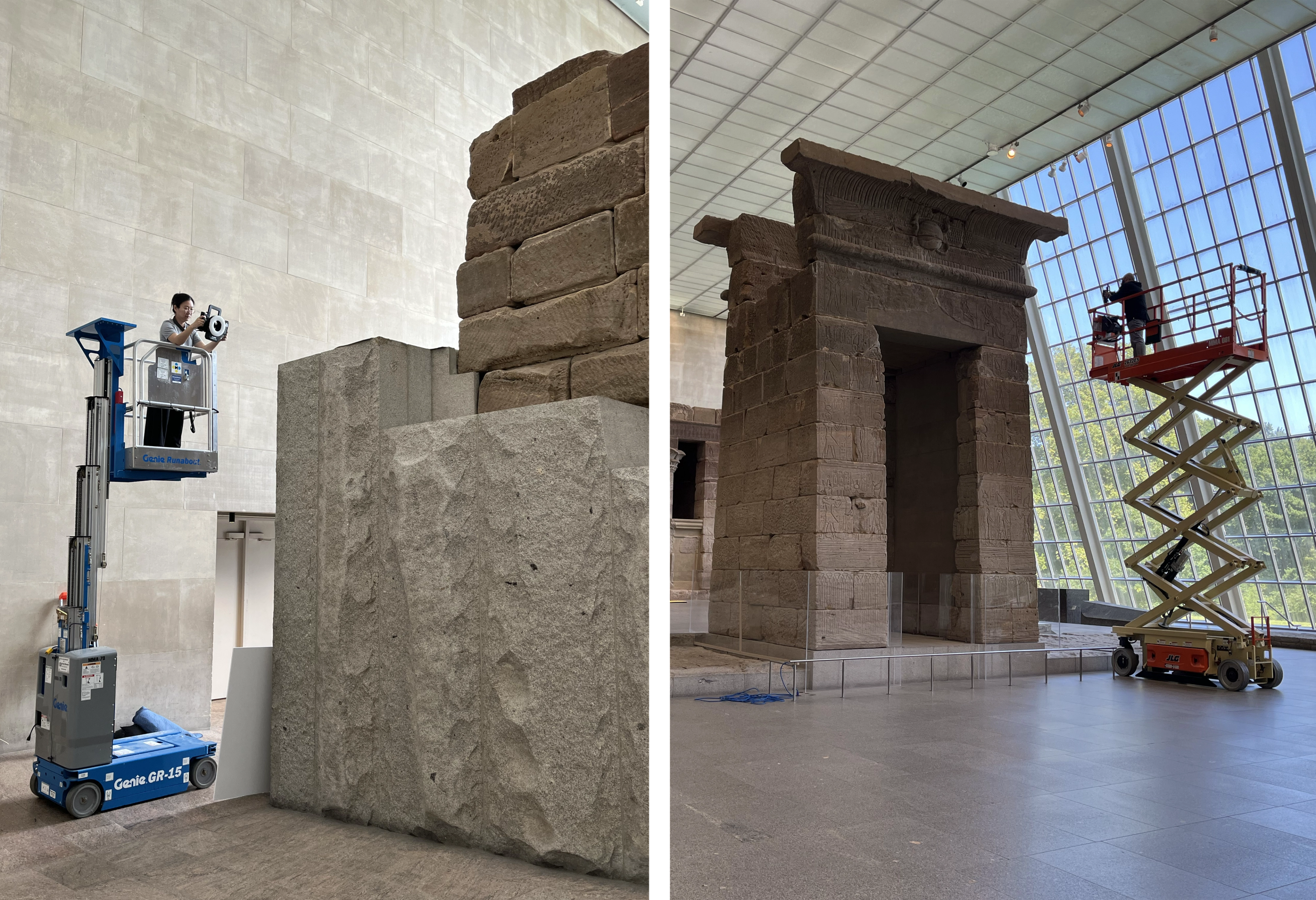
Met Imaging staff photographing the Temple of Dendur.
Completed in September 2024, this scan used a software process called photogrammetry that combined 28,685 photographs into a 3D model. The fantastic Collections Management Team in Egyptian Art also cleaned the temple.
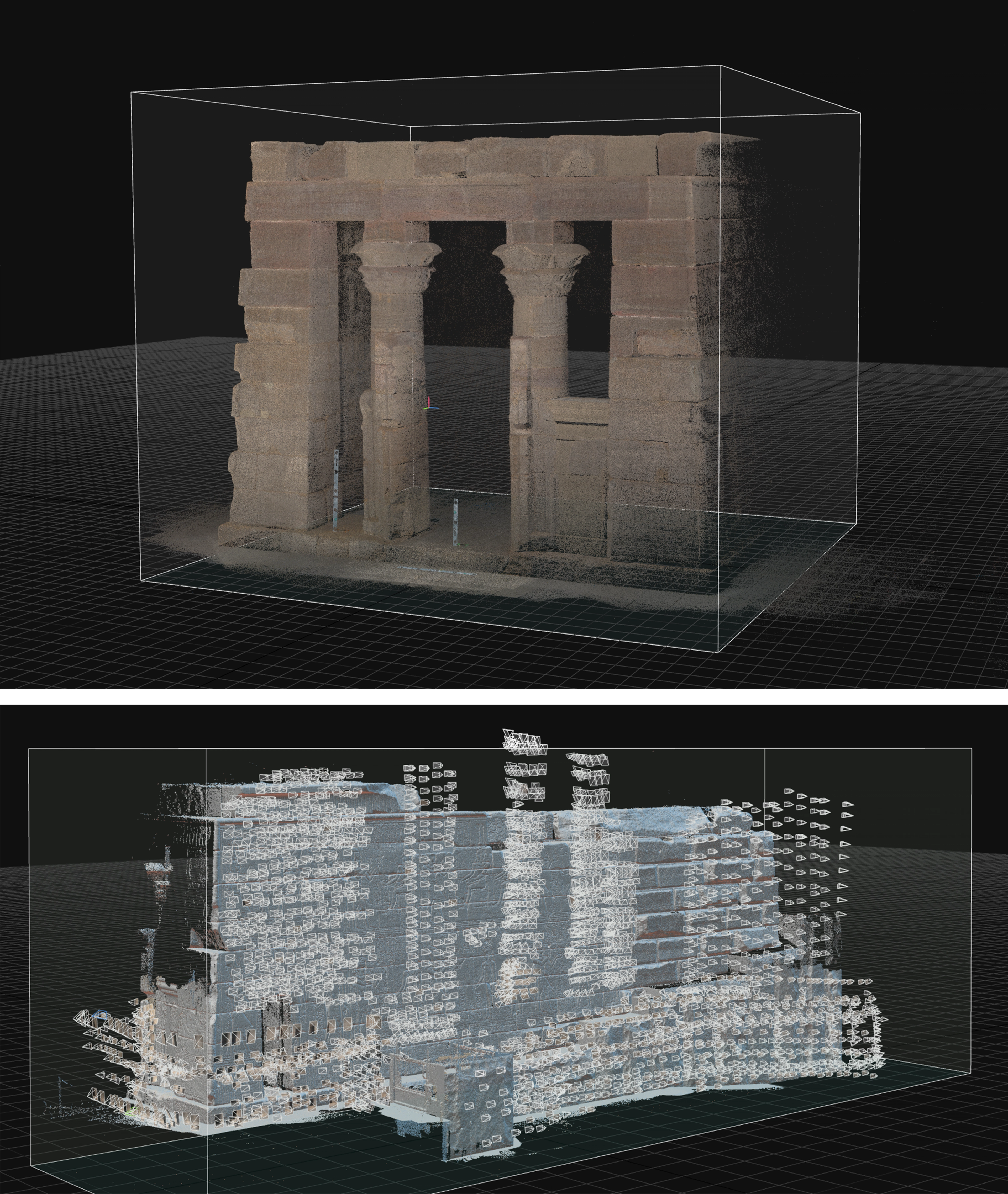
Photogrammetry of the Temple of Dendur.
Ready to explore?
We hope these projects are just the beginning, both for The Met and for museums at large. It's estimated that every month, at least 600 million people visit virtual worlds like Roblox, Fortnite, Horizon Worlds, and more, and we hope to offer educational and delightful experiences that live as a part of that landscape. We intentionally designed two very different experiences, each with unique interactions and arcs. We’re thrilled to see audiences try both—and to share what we learn as visitors explore and engage with these virtual spaces.
Visit the experiences on The Met’s website or in the Atopia app on your Meta Quest headset.
